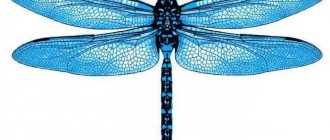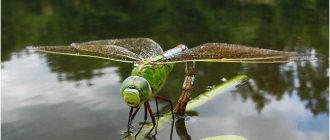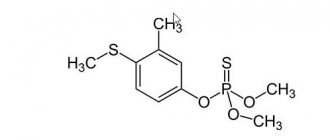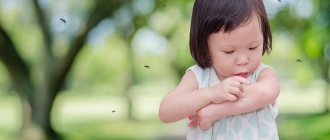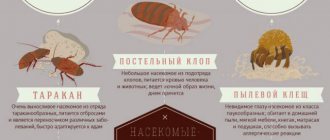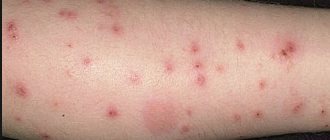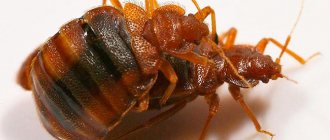Description and features
Dragonflies are flying predatory insects. They belong to the order of dragonflies, which has more than 6,000 species. The sizes of insects, depending on the species, range from 1.5 to 15 cm, and the wingspan is from 2 to 19 cm. The appearance of the dragonfly is easily recognizable. The insect has a large head with large eyes, short antennae, powerful mouthparts, chest, abdomen, three pairs of legs and two pairs of wings. Body color can be very different; dragonflies of various colors are found in the world. Some of them have a metallic sheen to their body.
Appearance
The dragonfly's head is very mobile and can rotate 180⁰. The eyes consist of a large number of facets (from 10 to 27 thousand). The lower rows of eye elements can only perceive the colors of objects, and the upper ones their shape. There are 3 simple eyes located on the crown. This structure and location of the eyes makes it possible for the dragonfly to survey the surrounding space not only in front of itself, it sees what is happening from the side, above and even behind.
But with the other senses the situation is much worse. Insects have a very weak sense of smell, and hearing is practically absent. The gnawing type oral apparatus is formed by strong, durable jaws, which are covered by the upper and lower lips.
The main feature that distinguishes dragonflies from other insects is their elongated abdomen, which makes up most of the body. The wings are large, transparent, consist of 2 layers of chitin and have many overlapping veins.
The tarsi consist of 3 segments, each of which is covered with small spines. The dragonfly needs its paws for grasping and holding prey, as well as for taking off and landing. Insects practically do not use them to move. During flight, the legs fold into the shape of a basket. This helps the insect instantly grab prey that gets in its way.
How to distinguish between male and female dragonflies?
Male and female dragonfly
Insects are characterized by sexual dimorphism. These are external differences between males and females, which are clearly noticeable especially in dragonflies. Dimorphism is important for dragonfly reproductive behavior. Surprisingly, the color of insects changes throughout life , the final establishment of color is noted at sexual maturity.
There are different types of sexual dimorphism in dragonflies. Some species are distinguished by large females and small males, while for others the opposite is true. Insect families also show certain trends in dimorphism. The beauties are distinguished by large males, and the shooters are distinguished by large females. The color of individuals is considered an important sign of sexual dimorphism. The pattern on the wings is also a sign of gender.
Sometimes insects exhibit polymorphism, that is, the presence of certain forms of one species that differ in color. In such cases, color is not associated with dimorphism.
Kinds
All dragonflies are divided into 3 subspecies:
- Homoptera - this includes the smallest insects with an elegant body and wings of equal length;
- heteroptera - in this category, the rear pair of wings has an expanded base, thanks to which they can develop high speed;
- anisozygoptera is a rather rare group living in Japan, Nepal and Tibet; representatives of this subspecies combine the characteristics of the previous two.
The most common species of dragonflies belonging to Homoptera are:
- beauties;
- arrows;
- Lutki;
- planipedes.
The suborder heteroptera includes:
- grandfathers;
- grandmothers;
- rocker arms;
- club-bellies;
- Flat bellies.
Flat-bellied
All dragonflies are amphibious, that is, at different stages of development they live in water and on land. In the aquatic environment, eggs develop and larvae, which are otherwise called naiads, grow; the life activity of adults takes place in the air and on land.
Types of dragonflies in Russia and the CIS countries
- Common dragonfly , also known as Sympetrum vulgatum.
The most common, as the name suggests, is the dragonfly. Its wingspan is up to 6 cm, the length of its abdomen is up to 3 cm.
The color of the abdomen is yellow-brown (females) or reddish (males). The species is widespread throughout Europe, Africa and Asia, and is also found even in Siberia and the Far East.
- Beauty girl, aka Calopteryx virgo.
Length 4.5 - 5 cm, wingspan about 7 cm. Males are characterized by a bluish-blue or green-blue body color with a metallic tint. Females boast a bronze-green body with transparent wings.
In some regions of Russia it is listed in the Red Book.
- Emperor Watcher, aka Anax imperator.
The largest dragonfly in terms of wingspan in the post-Soviet space. The wingspan of an adult is about 11 cm. The species is listed in the Red Book, as it is on the verge of extinction.
Moreover, it is steadily declining in Russia. The reason for this is the human impact on the environment (water pollution). In western Europe and northern Africa, the number of the species is much higher. Belongs to the rocker family.
- Bolton's Macebelly, also known as Cordulegaster boltonii.
The body length of this dragonfly reaches 9 cm. The wingspan is 10.5 cm.
Representatives of this species are distinguished by their black coloration with bright yellow stripes. The dragonfly's wings are transparent with black veins. Interestingly, the female drops her eggs into the pond while flying.
- The headstock is metallic, also known as Somatochlora metallica.
The body length of this heteropterous dragonfly species is from 4 to 5.5 cm.
The eyes are green, the body also has a green color with a metallic tint. The most numerous species in the CIS and Europe. There are yellow spots on the abdominal segments.
- Common Grandfather, also known as Gomphus vulgatissimus.
A multi-winged dragonfly from the family of grandfathers. The wingspan is up to 7 cm, the body length is 4.5 - 5 cm. At the end of the abdomen there is a club-shaped thickening. Widely distributed throughout Europe and Central Asia.
The development cycle has more than 10 stages, females throw eggs into the water in flight.
Several more types of dragonflies:
The southern arrow, also known as Coenagrion mercuriale. A relict species, in some regions it is under threat of extinction.
Dryad lute , also known as Lestes dryas. This small (wingspan 3 cm) dragonfly is also included in the Red Book.
Lifestyle and habitat
Dragonflies live in almost all corners of the globe; they are not found only in Antarctica, Greenland, Iceland and the islands of the Arctic Ocean. The wide distribution area is due to the ancient origin of insects, their ability to move quickly and over long distances, as well as the lack of food specialization.
Insects prefer warm regions with high humidity. Dragonflies live only in those areas where periods with stable negative temperatures last no more than 90-120 days.
The habitat of dragonflies is closely related to water bodies, since it is on water that females lay their eggs. The choice of pond is largely determined by the type of insect. These can be lakes, rivers, ponds and even flooded ravines or pits. The larvae, emerging from the eggs, grow and develop in water, and the adult dragonfly, having laid a clutch, can remain nearby or fly away over a long distance, measured in hundreds of kilometers, and most often the flights are made alone.
You can meet a dragonfly in nature in any open area, for example, on a forest edge or in a meadow. This is due to the fact that it is very important for the insect to be exposed to the sun. Dragonflies are diurnal, going out to hunt in the morning or evening. As night approaches, they hide in the grass or in the crown of trees.
Origin of the species
Dragonflies are an ancient group of arthropods. The first dragonflies lived on the planet back in the Carboniferous period during the Paleozoic era. The origin is related to the giant dragonfly-like insects Meganeura. Those, in turn, were large arthropods with a wingspan of up to 0.66 meters. They are considered the largest arthropods of that time. Subsequently, it was they who became the descendants of Kennedyina, Ditaxineurina, living already in the Triassic period of the Mesozoic. These arthropods were also distinguished by their large size, with a span of up to 90 mm. When the animals rested, the wings were hidden under the abdomen.
Meganeura
In those days, insects had a well-developed trapping basket. They used it to grab victims. The next descendants of Meganeura living in the Jurassic period are Lestomorpha, Libellulomorpha, the larvae of which are capable of developing in water. Their aircraft has changed significantly, becoming more advanced. The descendants of meganeurinids gradually settled throughout the planet.
At this time, the descendants of the superfamily Calopterygoidea changed dramatically. Their wings became narrower and evened out in size. The Cretaceous era carried away many suborders of insects, and in the Cenozoic era modern suborders of dragonflies can be seen. In the Neocene, dragonflies ceased to differ from modern ones.
Nutrition
Dragonflies are aggressive predators that pose a danger to many species of insects (mostly flying ones). They even attack those larger than them, and in most cases successfully. Interestingly, most species eat prey on the fly while in the air. They are very voracious, so they eat several dozen insects per day, the total weight of which significantly exceeds their own weight.
So, what do adult dragonflies eat:
- mosquitoes;
- flies;
- midges;
- beetles;
- spiders;
- moth;
- dragonflies.
These insects can be divided into several categories according to their hunting method:
- free upper tier predators - species that can fly high, lie in wait for prey at a height of 2 - 9 m above the ground;
- free hunters of the middle tier - hunt at a height of 0.5 - 2 m above the ground, most often circling over bodies of water, only occasionally resting on the grass or plants sticking out of the water;
- lying in wait hunters - sit in ambush on blades of grass or bushes, waiting for a prey flying past, and when they notice it, they suddenly take off and attack;
- grazing predators - hunt in thickets of grass, flitting from place to place in search of prey, having caught it, they eat it while sitting on a plant.
Dragonfly larvae feed on fish fry, leeches, insect larvae, tadpoles, and small crustaceans.
What does a dragonfly eat?
Dragonflies and their nymphs feed exclusively on prey. They usually hunt prey in flight, but some species wait in place and take off after prey only when they see it.
Particularly large dragonflies often devour their prey in flight. Thanks to their excellent vision, they can see prey at a distance of up to 2-6 meters. They first grab the prey with their legs, then pull it towards their mouth. Their prey is usually any flying insects, sometimes other types of dragonflies (often a dragonfly catches a butterfly).
The nymph hunts with the help of a so-called mask, which is a reshaped lower muzzle with a grasping device. She can extend the mask up to a third of her body and use it to drag prey to her mouth. Most often they prey on the larvae of other aquatic insects.
Reproduction and lifespan
Dragonflies are insects with incomplete metamorphosis; they skip the pupal stage. The life cycle of a dragonfly includes three stages:
- egg;
- larva;
- imago.
Larva
Depending on the species, reproduction of dragonflies can occur 1 or several times a year. Before mating, males unite in groups and begin to look for partners. Coitus occurs in the air and can last from a few seconds to 2-3 hours. The insects spend this time clinging together, hovering in the air.
The fertilized female goes to the nearest suitable body of water, where she lays eggs in an amount of from 100 to 600 pieces. Masonry is most often done on plants that rise above the water or are located under it. The larvae hatch within a few weeks. The entire life of a dragonfly larva is spent in water. They actively hunt, feed and grow. At this stage, the insect experiences from 5 to 15 molts.
The duration of development during the larval stage largely depends on the availability of sufficient food. It can take from several months to several years before becoming an adult.
When the time comes to move to the adult stage, the larva crawls out of the water (along a plant stem, stone, snag) and remains in the air from several hours to several days. At this time, she begins to breathe atmospheric air, frees herself from the shell under which the wings were hidden.
Features of character and lifestyle
Dragonfly
In Russia, dragonflies are found from mid-spring to mid-autumn. In warm regions, insects are found throughout the year. Insects are diurnal, being more active on warm sunny days.
In the mornings, dragonflies bask in the sun, resting on stones, grass or trees. At noon, they assume a “reflection” position, reflecting the sun’s rays with the tip of their abdomen. Thus, the animal does not overheat. Hunting takes place in the evenings and mornings. The species is more active during dawn. At night, dragonflies rest alone in the thickets.
Natural enemies of dragonflies
Due to the fact that larvae and adult insects live in different environments, their enemies are also different. The danger for larvae is:
- predatory and omnivorous fish;
- birds living on shallows and near bodies of water (herons, waders, etc.);
- swimming beetles and their larvae;
- some species of water bugs.
Adult dragonflies are hunted by:
- orb-weaving spiders, tetragnathid spiders, hobo spiders;
- blackflies;
- birds (including bee-eater, white wagtail, gulls, ducks, swifts, woodpeckers).
Enemy of the dragonfly
In addition, dragonflies can become prey for carnivorous plants. Most often these are varieties of sundews growing in sphagnum and peat bogs. To date, no enemies of dragonflies have been found among mammals and reptiles.
Considering that adult insects are quite cautious, fly quickly and maneuver deftly in the air, it is not easy to catch them. A predator can eat a dragonfly only if it takes the insect by surprise, which does not happen often.
Population and species status
Blue Dragonfly
Dragonflies are distributed throughout the globe. As of 2013, there were approximately 6,650 animal species on the planet. At the moment, the figures have increased significantly. Researchers are constantly finding new species. However, at the moment, some species of dragonflies may disappear forever. This occurs due to constant human pollution of the environment.
At the end of 2021, there were more than three hundred species at risk of extinction. One species, Megalagrion jugorum, is considered permanently extinct. Approximately 10% of all animal species are threatened with extinction. Insects are important for determining the condition of natural bodies of water. They hunt pests and react strongly to changes in water quality. To preserve species, you need to take care of nature.
The benefits and harms of dragonflies
Like many other insects, dragonflies cannot be called clearly beneficial or harmful. Their benefit is that adult individuals feed on insects, and therefore play a significant role in the regulation of certain types of blood-sucking insects (including such dangerous ones as horseflies or tsetse flies), pests of agricultural crops and forests. In addition, dragonflies participate in pollination. Flying from flower to flower, they carry pollen on their legs. Fish and crustaceans feed on the larvae of these insects. Fishermen often use them as bait.
Damage is caused mainly by dragonfly larvae. They eat the fry of some fish species or compete with them for food, which leads to a decrease in the population. In addition, the larvae are hosts for parasites, in particular helminths. Birds (including domestic birds) eating larvae can become infected with prostagonymosis. This is a serious disease that affects the bird's ability to lay eggs. Without timely, competent treatment, there is a high risk of death.
Dragonfly protection
Dragonfly
Animals occupy an important place in the functioning of the ecosystem. They destroy pests and are considered food for birds and fish, as well as mammals and other insects. In addition, it is possible to determine the state of water in the region based on the state of dragonflies. Dragonflies begin to die out where water bodies are polluted.
Many species are under threat of complete extinction due to constant pollution of water bodies. The established society for the protection of these insects monitors population sizes.
General characteristics of dragonflies
General characteristics help to understand what each unit is.
Dragonflies are the largest flying insects on Earth. They are predators. The order of dragonflies includes suborders: heteroptera and homoptera.
Like the dragonfly, the louse's characteristics are quite simple.
These insects are blood-sucking parasites. They belong to the order of lice eaters. The general characteristics of lice do not form any suborders. By parasitizing on humans, they cause lice, or lice are scientifically the causative agents of pediculosis. Beetles are the most numerous inhabitants in the world. There are about 300 thousand species of them. All of them form the order Coleoptera. Bedbugs are numerous representatives of the order Hemiptera.
Appearance
Most often, we distinguish representatives of the animal world by their appearance. Dragonflies have a long and thin body, which is connected to a small round head by the thorax. On the body there are 3 pairs of legs, as well as 2 pairs of long transparent wings, which can have the same shape in homoptera dragonflies and different shapes in heteroptera. Large eyes and antennae are clearly visible on the head.
The appearance of beetles can be very different. They come in different colors. Their sizes vary from a few millimeters to 15 centimeters.
All beetles have a large elongated body, a small head, a three-segmented thorax, and 3 pairs of five-segmented legs extending from the body.
Bed bugs can also be found in nature in different sizes and colors. Their body is generally round in shape and their head is small.
Variety of dragonflies
Today, more than 6 thousand species of dragonflies are known.
They are distinguished by their color, which can be very different, and their size, which can be from 3 to 12 centimeters. There are several thousand species of lice. But among this huge variety of lice, only three types are dangerous for humans: head, body and pubic. They differ in their habitat.
The entire variety of beetles can be divided into 6 families: predators, weevils, longhorned beetles, leaf beetles, ground beetles and lamellar beetles.
The variety of bedbugs is very large. The most famous of them are house bugs that feed on human blood.
In natural conditions
The dragonfly prefers to hunt near bodies of water, since large concentrations of small insects can often be observed in these places. The dragonfly requires quite a lot of food - in a day it can absorb an amount of prey that exceeds its own weight several times. Try to imagine - an adult dragonfly can eat up to forty flies in a day!
In addition, it is very convenient to live near bodies of water, since it is in the water that dragonflies lay their eggs and hatch their larvae.
The dragonfly is active during the daytime; clear sunny weather is most favorable for it. And at night these insects hide in a shelter.
This is a very smart creature - there are studies proving that dragonflies are able to calculate the trajectory of their victims during a hunt and can predict the movement of prey several steps ahead.
The dragonfly has no special preferences in its diet. Observing what dragonflies feed in nature, you will notice that these insects are more concerned about the size of potential prey than its type. Therefore, dragonflies are not selective in their food. In general, their diet consists of flies and midges, mosquitoes and their larvae, as well as other insects.
Especially large individuals living in the southern regions can even hunt small amphibians and fish.
It should be noted that the dragonfly is an insect that is beneficial to humans, since it destroys a large number of garden and garden pests.
Economic importance
Like many predators, dragonflies are useful and at the same time harmful to the economy. Adult insects destroy pests, but the larvae often eat the necessary fish species in lakes. The larvae are also considered carriers of avian prostagonymosis, as they are hosts for parasites. In such cases, domestic poultry such as chickens, turkeys and geese are affected. Trematodes are often found in wild animals. The excrement of sick birds that falls into the water is eaten by mollusks, where miracidia begin to develop. They gradually turn into sporocysts and redia, after which they emerge from the mollusks and again end up in dragonfly larvae. The process is repeated again and again as the birds destroy the larvae.
Four-spotted dragonfly (Libellula quadrimaculata L.)
The length of the abdomen is 27-32, the length of the wing is 32-39 mm. The species identity of these dragonflies is easy to determine even from a distance due to the characteristic yellow abdomen with dark last segments, shaped like a narrow cone, dark spots on the nodules (in the middle of the anterior edge) of all four wings and yellow-brown spots at the base of the hind wings. This is one of our few transboreal species. It is distributed in the temperate zone of the entire Northern Hemisphere - both in Eurasia and America. In the European part of Russia this species is found everywhere.
The four-spotted dragonfly exhibits classic territorial behavior during breeding. L. quadrimaculata is characterized by periodic outbreaks of mass reproduction and migratory flights over many kilometers in huge flocks, comparable to migratory locusts. The number of the four-spotted dragonfly is always greater outside of periods of mass reproduction than the other two Libellula species. In the European part of Russia, these dragonflies are among the first to appear in the air - already in May - and fly until the end of August. Their larvae are bottom inhabitants of standing reservoirs of all types.
Read: Ants are the secret rulers of the planet
Dragonflies
Dragonflies are called “air pirates of the insect world.”
These are voracious and dexterous hunters. Dragonflies catch their prey in the air and often eat it without interrupting their flight.
Basic data:
Structure of a dragonfly
Depending on the structure of the body, two groups can be distinguished: large and fast representatives of the suborder Anisoptera (damselflies) and smaller, gentle and slow homoptera dragonflies (order Zygoptera).
On the head of the dragonfly you can see large jaws and huge eyes, each of which consists of approximately 25-30 thousand simple eyes. In unequal-winged dragonflies, the eyes occupy most of the surface of the head; they converge at the top and allow the insects to see almost everything around them. The eyes of homoptera dragonflies are smaller and farther apart, so their heads are shaped like a hammer. Homoptera dragonflies see as well as their mentioned relatives.
Some dragonflies can turn their heads, thus changing their viewing angle. The antennae of dragonflies are small and inconspicuous. The body of a dragonfly differs from the body of other groups of insects. It is beveled, so the lower part, from which the legs grow, is pushed forward, and the upper part with the wings is moved back. The first pair of wings grows out of the body higher than the second, and the first two pairs of legs are located immediately behind the head.
This arrangement of legs does not allow dragonflies to walk, however, thanks to this body structure, they can hold on to any base with their feet and successfully catch prey with them.
- Of the 4,700 species of dragonflies, fewer than 100 can be found in Europe.
- The larvae of large dragonflies escape from enemies in a special way - they forcefully push water out of the anus, and therefore the larva can quickly move forward with a quick push, like a jet engine.
- Dragonflies were one of the first forms of flying insects on our planet. They appeared more than 300,000,000 years ago. Fossils give us evidence that the wingspan of ancient dragonflies reached ninety centimeters.
- If a male dragonfly decides to mate with a recently fertilized female, he uses a special organ to remove the sperm of the previous partner and fertilize the female again.
The ancestors of modern dragonflies, which had a wingspan of up to ninety centimeters and a body length of up to thirty centimeters, existed already in the Carboniferous period. All dragonflies have the same body structure and a similar lifestyle.
Scientists distinguish two suborders - small homoptera and large heteroptera dragonflies.
When a young dragonfly first takes to the air, it still looks rather modest, as if its metamorphosis is not complete. Only after a few days or even weeks does it acquire the coloration of an adult. During this time, dragonflies stay away from water and return to it only with the onset of the mating season.
The males arrive here first. Males of almost all dragonflies are much brighter colored than females. Males of some species fight each other over territory. The winner sits on a place located on a hill, and from there attacks any male who dares to cross the boundaries of his territory.
When a male notices a female, he seeks to win her favor and prevent her from mating with other males. The secondary reproductive organs of the male are located on a specific projection of the third abdominal segment. The male deposits a spermatophore in a special hole located on the abdomen. Then he grabs the female by the neck with his claw-like appendages of the posterior end of the abdomen and drags her along in the air until she raises the posterior end of the abdomen towards the spermatophore. Dragonflies flying in pairs have the appearance of a ring.
Partners remain in this position for an hour or even longer. A fertilized female lays eggs either directly into the water, or into underwater or above-water parts of plants. Homoptera dragonflies usually lay their eggs directly on the water, while homopterans carefully place them on plants.
Life cycle of dragonflies
In temperate climates, dragonflies appear in the spring and die in late autumn.
Only some species live longer than a few months. But the winged individual is the last stage of a complex life cycle that can last several years. In the fall, before dying, the female dragonfly lays eggs on aquatic plants growing on a marshy bank or in the water.
In the spring, they hatch into embryonic larvae with an elongated body. They immediately moult and turn into naiads with well-developed limbs.
Naiads have no wings, are modestly colored, and live in water.
Their body consists of a head, often with large eyes, a chest with two pairs of paws and an abdomen, on which the respiratory organs are located. The respiration of dragonfly larvae is carried out due to oxygen dissolved in water.
In the larvae of homoptera dragonflies, the respiratory organs are leaf-shaped tracheal gills located at the posterior end of the abdomen. Naiads are the same predators as adult dragonflies.
They grow quickly and molt 9 to 15 times during development. Underwater, naiads can take up to 6 years to develop before becoming adults.
Biological features of dragonflies
Insects live near fresh water bodies, although they can also be found at a considerable distance from the water.
Dragonflies have a number of abilities that a person could only envy. First of all, this concerns the structure of the eyes and the exceptional vision of the insect. The dragonfly sees in all directions at the same time, which helps it provide itself with food, which requires a very large amount.
Thanks to its unique vision, it rarely becomes prey for other predators. And it can also be difficult for a person to catch it.
The movement of a dragonfly's wings is interesting because they can flap alternately and in any sequence. Only she has such a perfect aircraft. It is this that allows you to move in different directions during flight, hover, and make sharp throws.
Dragonfly eating: video
To see more clearly what dragonflies feed on and how they do it, you can watch a close-up video that shows this very well.
Pay attention to the strong jaws of the dragonfly, with which it successfully grinds the hard chitin that covers insects.
Under natural conditions, hunting does not cause difficulties for the dragonfly, however, it itself can become prey for amphibians, birds or mammals. In fairness, it is worth noting that the natural agility of the dragonfly often helps it avoid dangerous situations.
Structural features
The same parts of the body can perform completely different functions in different animals. They depend on the animal’s lifestyle and environmental conditions.
Structural features of dragonflies
The eyes of dragonflies have a complex structure. Their good vision is due to the fact that their upper part recognizes the shape of objects, and the lower part recognizes colors. To ensure the strength of the wings, veins are located along their entire length, and at the end you can see dark spots that reduce vibration during flight, thereby preventing wing fracture. Dragonflies can make various beats of their hind and front wings for balance and synchronized ones for speeds that can reach 50 km/h. The lower lip is well developed and very long.
It allows you to deftly grab prey. To hunt, the dragonfly compresses its legs while flying.
Features of the structure of lice
Structural features of beetles
The main feature of beetles is their wings. They are double: the upper pair hardened during evolution and formed a chitinous shell, while the lower pair remained transparent and veiny. This structure protects the beetle's body. They have a chewing-gnawing mouthparts.
Features of the structure of bedbugs
Bedbugs have glands on their chests that secrete an odorous enzyme. It is unpleasant to humans and resembles the smell of almonds. It serves to scare away enemies.
Dragonflies can move their wings alternately and in any order.
One of the most distinctive characteristics of dragonflies is the way their wings work. Their four wings work independently of each other, allowing the dragonfly to move in the air, much like a helicopter - they can hover, fly forward, backward and sideways, and instantly change direction if they need to. Dragonflies are the only insects in the world that have such advanced control of their wings. Fragile but strong - each wing is attached to the chest using a separate group of muscles.
By making slight shifts and adjustments to each wing as it flies, the dragonfly takes precise aim and freezes directly in the path of the fly flying to its doom. And if a dragonfly catches its prey, then you can expect no mercy, and all because it has a death grip.
Lifestyle of dragonfly larvae
Stagnant or slow-moving waters are where large numbers of dragonfly larvae can be seen. They are inactive, capable only of slowly crawling along the bottom of a reservoir or swimming. But most often the larvae sit motionless, clinging to the underwater parts of the plants with the claws on their paws. There are species that burrow into the mud.
If danger arises or during hunting, the larvae are able to very quickly leave their place of residence. To do this, they use a method of swimming using recoil, in which a stream of water is thrown out with enormous force from the back of the larva’s abdomen. Thanks to this, high speed of movement occurs.
Reproduction
The main feature of living beings is reproduction - the reproduction of their own kind, which can be different for each species. Dragonflies reproduce sexually. Mating occurs directly during flight. To scare away other males, the male performs a ritual flight around the female.
Lice also reproduce sexually. After fertilization, the female, fed with blood, crawls through the hair, laying eggs along with secretions. Hardening after some time, it ensures strong attachment of the nit to the hair. Next begins the life cycle of lice, which was mentioned earlier. Male beetles can fight for a female. Also, in order to find each other, the couple releases a smelling substance - a pheromone. has the following feature: fertilization of the female occurs without her desire, that is, by force.
Now everything has become known about lice and nits, dragonflies, beetles and bedbugs, their habitat, existence and nutrition. This knowledge will help us better understand the world around us.
Graceful hunter - dragonfly
These are the largest flying insects. All of them are divided into heteroptera and homoptera. Different-winged dragonflies are larger in size than even-winged dragonflies, and besides, they fly better.
The insect's body consists of a head, chest and long abdomen, at the end of which there is a pair of forceps. Body length 3 - 12 cm. Color varied: white and green, yellow and red, blue and orange.
Graceful transparent wings are its decoration. There are many transverse and longitudinal veins on the wings, which have a strengthening function. A dark spot on the wing protects the fly from vibration in flight.
Agile flyers develop colossal speed; some species can cover distances at speeds of 100 km/h.
Basically, the flight speed of the “jumper” is 5 km/h. They cover hundreds of kilometers without stopping, and can expertly hover in the air and suddenly stop. When she sits on a branch or any solid ground, her wings do not fold, they are always in a straightened state.
Each individual has three pairs of legs covered with shields. In flight, they fold their limbs into a basket - this makes it more convenient to grab prey.
Their mouthparts are of the gnawing type. The lower lip is a harpoon, shoots and grabs prey. Large eyes help track prey and can see anything edible at a distance of 10 meters. The structure of the eyes is complex - faceted.
All dragonflies are predators. They feed mainly on mosquitoes, flies, moths and other insects, which they pursue with great speed.
Dragonflies live in Europe, Asia, America, Australia, and Africa.
They can be found in meadows, forest edges, fields, but there must be a body of water nearby. They lead a solitary lifestyle. Enemies - many birds, spiders.
When courting a female, the male performs a mating flight, at the same time driving away other contenders. Soon the female will lay about 200 eggs in fresh water, either in wood or on various parts of the plant. The development of an insect consists of three stages: egg - larva (naiad) - adult.
The larvae are inactive and spend their development in the fresh waters of the reservoir. In some species, development can last 5 years. Larvae with huge eyes They are ferocious and voracious predators, they can even eat their relatives.
They wait for hours for their prey to hide, and as soon as it appears in sight, they immediately attack it. They feed on aquatic insects and their larvae and fry. Having lived in the reservoir for the required period of time and shed several times, the naiads climb out of the water along the stems of aquatic plants.
Having dried, they molt for the last time, and a beauty with wings is born. A few more moments and she will fly into the sky.
Despite their predatory lifestyle, insect larvae are often easy prey for other natural inhabitants, such as fish. Out of one hundred eggs, only three individuals survive to the adult stage. Adults live for about a month and then die.
In the wild, dragonflies live for 7 years.
The fauna that surrounds humans is rich and diverse. Knowledge about some creatures will help us understand and realize what is around each of us. This article discusses orders of insects: dragonflies, lice, beetles, bedbugs, which are most often encountered in people's lives.
